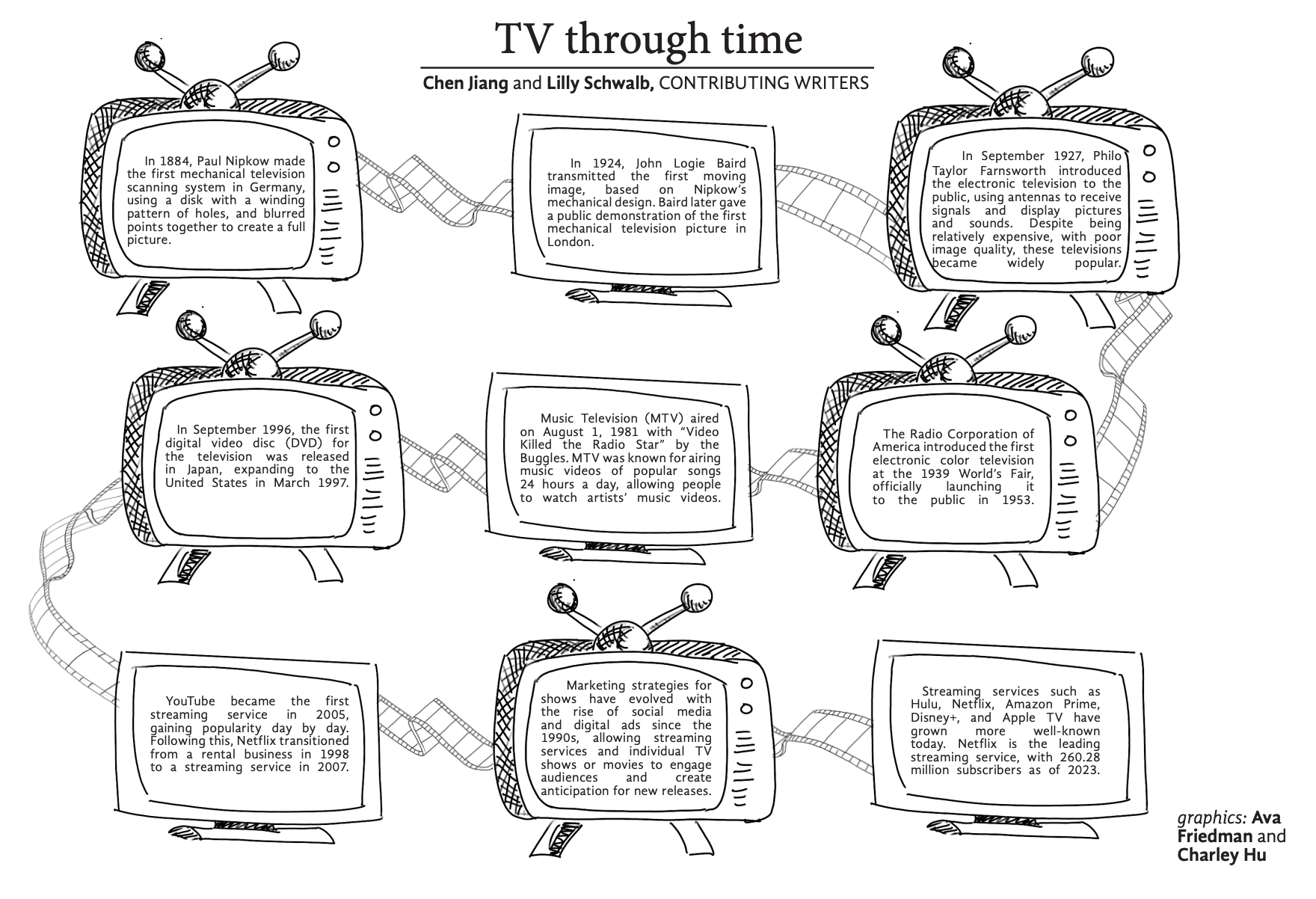TV through time
March, 2024
Graphics: Ava Friedman and Charley Hu
In 1884, Paul Nipkow made the first mechanical television scanning system in Germany, using a disk with a winding pattern of holes, and blurred points together to create a full picture.
In 1924, John Logie Baird transmitted the first moving image, based on Nipkow’s mechanical design. Baird later gave a public demonstration of the first mechanical television picture in London.
In September 1927, Philo Taylor Farnsworth introduced the electronic television to the public, using antennas to receive signals and display pictures and sounds. Despite being relatively expensive, with poor image quality, these televisions became widely popular.
The Radio Corporation of America introduced the first electronic color television at the 1939 World’s Fair, officially launching it to the public in 1953.
Music Television (MTV) aired on August 1, 1981 with “Video Killed the Radio Star” by the Buggles. MTV was known for airing music videos of popular songs 24 hours a day, allowing people to watch artists’ music videos.
In September 1996, the first digital video disc (DVD) for the television was released in Japan, expanding to the United States in March 1997.
YouTube became the first streaming service in 2005, gaining popularity day by day. Following this, Netflix transitioned from a rental business in 1998 to a streaming service in 2007.
Marketing strategies for shows have evolved with the rise of social media and digital ads since the 1990s, allowing streaming services and individual TV shows or movies to engage audiences and create anticipation for new releases.
Streaming services such as Hulu, Netflix, Amazon Prime, Disney+, and Apple TV have grown more well known today. Netflix is the leading streaming service, with 260.28 million subscribers as of 2023.